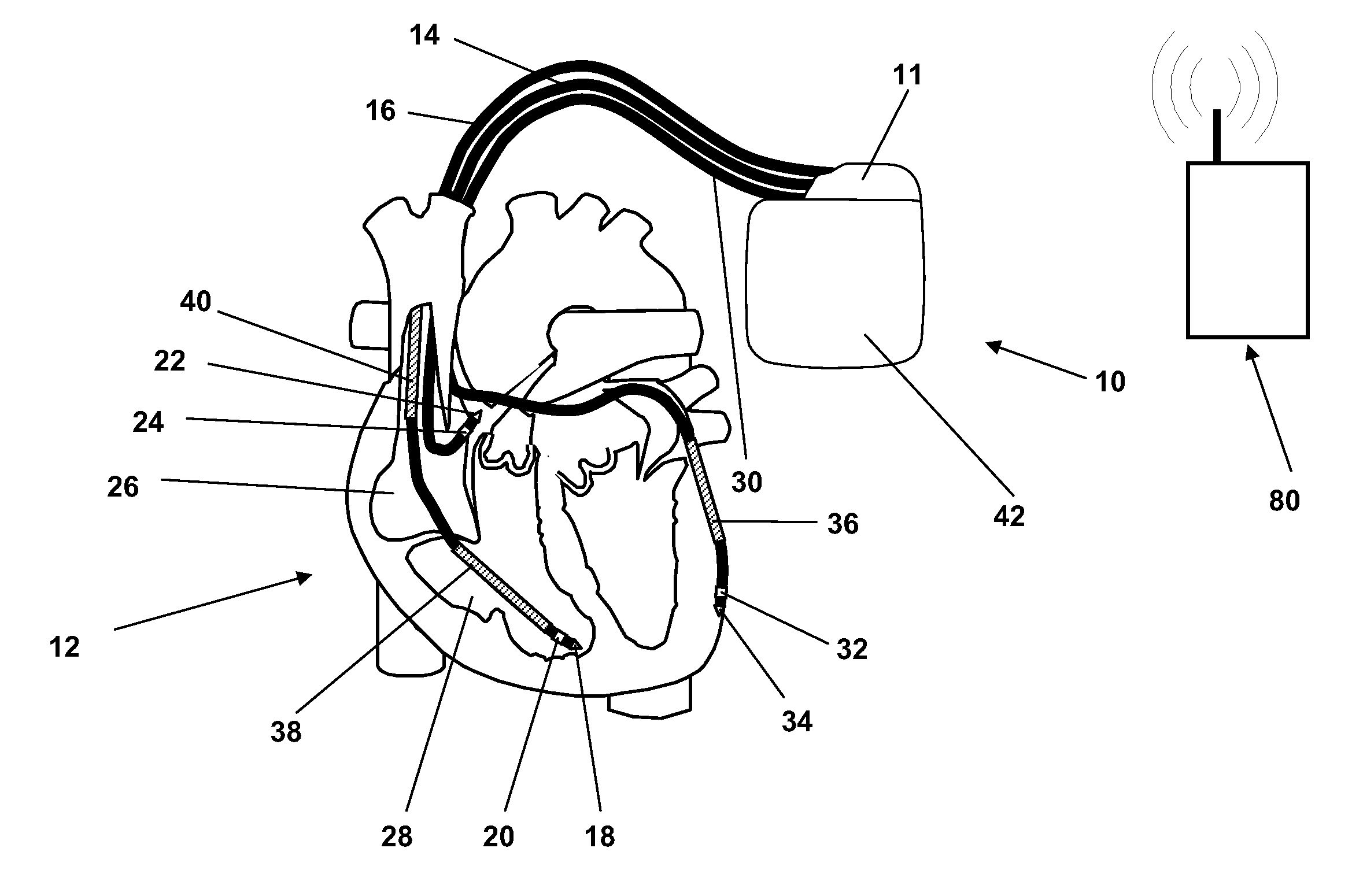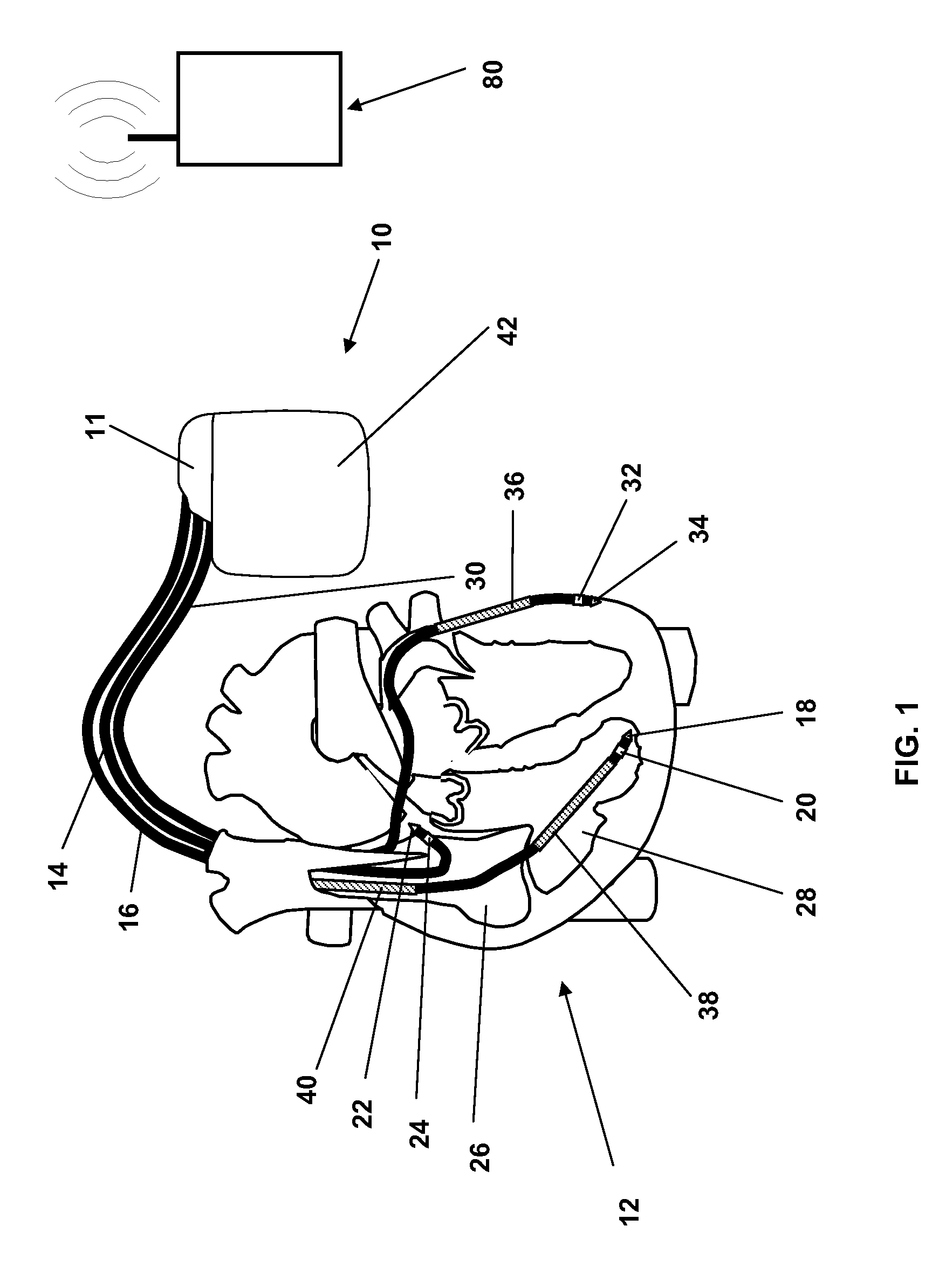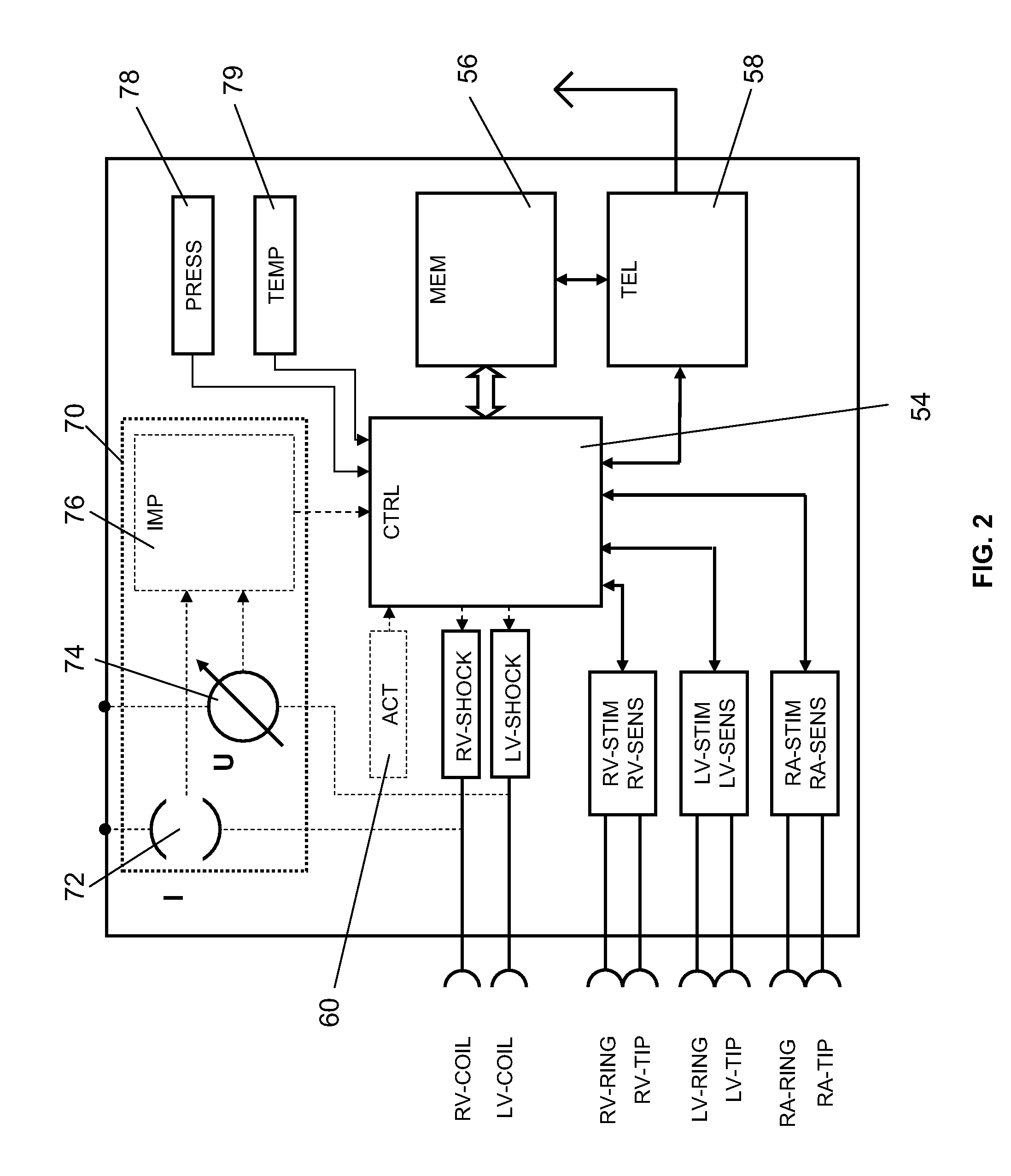Switch polarity pacing to improve cardiac resynchronization therapy
a resynchronization therapy and switch polarity technology, applied in the field of implantable cardiac devices, can solve the problems of intra-ventricular dysynchrony remains, lv lead cannot be placed in such a target location, and one third of crt candidates are non-respondents, so as to improve the hemodynamic function of the heart, reduce intra-ventricular dyssynchrony, and improve cardiac function. the effect of maximal improvemen
- Summary
- Abstract
- Description
- Claims
- Application Information
AI Technical Summary
Benefits of technology
Problems solved by technology
Method used
Image
Examples
Embodiment Construction
[0033]A typical implantable medical device is an implantable heart stimulator as illustrated with respect to FIGS. 1 and 2.
[0034]In FIG. 1 the implantable medical device is a three chamber biventricular pacemaker and cardioverter / defibrillator 10 that is connected to pacing / sensing leads placed in a heart 12 is illustrated.
[0035]Pacemaker 10 comprises a gas proof housing (can) 42 made from a biocompatible metal such as titanium. Pacemaker 10 comprises a transparent header 11 that is made from electrically insulating plastic and that encloses terminals to which electrode leads 16, 14 and 30 are connected detachably. Electrode leads 16, 14 and 30 each comprise a proximal connector (not shown) that is plugged into the connectors of header 11.
[0036]The implantable medical device 10 is electrically coupled to heart 12 by way of leads 14, 16 and 30.
[0037]Lead 14 is a right atrial electrode lead that has a pair of right atrial electrodes 22 and 24 that are in contact with the right atrium ...
PUM
 Login to View More
Login to View More Abstract
Description
Claims
Application Information
 Login to View More
Login to View More - R&D
- Intellectual Property
- Life Sciences
- Materials
- Tech Scout
- Unparalleled Data Quality
- Higher Quality Content
- 60% Fewer Hallucinations
Browse by: Latest US Patents, China's latest patents, Technical Efficacy Thesaurus, Application Domain, Technology Topic, Popular Technical Reports.
© 2025 PatSnap. All rights reserved.Legal|Privacy policy|Modern Slavery Act Transparency Statement|Sitemap|About US| Contact US: help@patsnap.com



